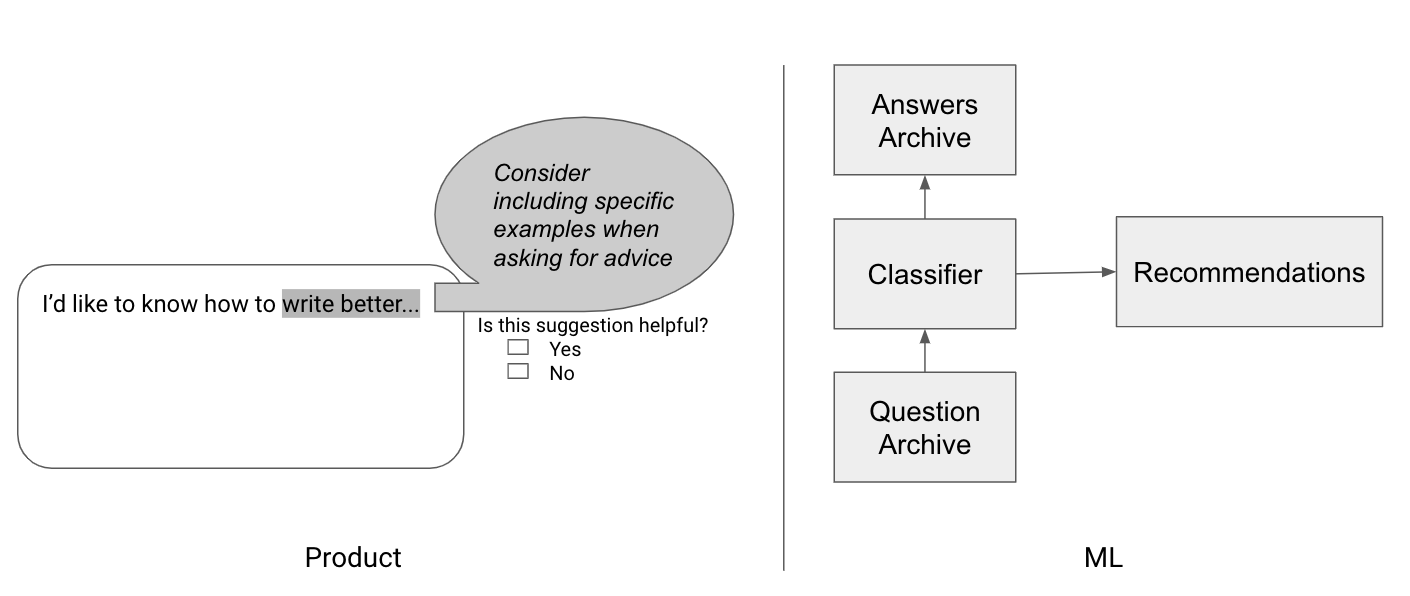Part I. Find the Correct ML Approach
Most individuals or companies have a good grasp of which problems they are interested in solving—for example, predicting which customers will leave an online platform or building a drone that will follow a user as they ski down a mountain. Similarly, most people can quickly learn how to train a model to classify customers or detect objects to reasonable accuracy given a dataset.
What is much rarer, however, is the ability to take a problem, estimate how best to solve it, build a plan to tackle it with ML, and confidently execute on said plan. This is often a skill that has to be learned through experience, after multiple overly ambitious projects and missed deadlines.
For a given product, there are many potential ML solutions. In Figure I-1, you can see a mock-up of a potential writing assistant tool on the left, which includes a suggestion and an opportunity for the user to provide feedback. On the right of the image is a diagram of a potential ML approach to provide such recommendations.

Figure I-1. From product to ML
This section starts by covering these different potential approaches, as well as methods to choose one over the others. It then dives into methods to reconcile a model’s performance metrics with product requirements.
To do this, we will tackle two successive topics:
- Chapter 1
-
By the end of this chapter, you will be able ...
Get Building Machine Learning Powered Applications now with the O’Reilly learning platform.
O’Reilly members experience books, live events, courses curated by job role, and more from O’Reilly and nearly 200 top publishers.

